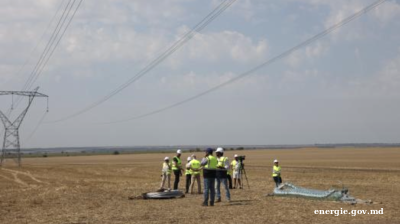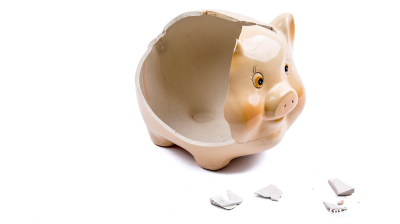China is covertly supplying a new decoy drone using entirely Chinese technology as well as engines sent to Russia’s state-owned drone manufacturer Kupol that has allowed russia to boost drone strikes to 500 per day, NV reports.
The engines are sent through front companies, labeled as “industrial refrigeration units,” Reuters reported on July 23, citing sources in European security agencies.
European security officials told journalists that these shipments have allowed Kupol to ramp up production of Garpiya-A1 attack drones, despite US and EU sanctions imposed in October.
An internal Kupol document revealed that the company signed a contract with Russia’s Defence Ministry to produce over 6,000 Garpiya drones this year, up from 2,000 in 2024, with more than 1,500 already delivered by April, according to Reuters.
Ukrainian intelligence informed the agency that these long-range drones are used to strike civilian and military targets deep within Ukrainian territory, with Russia deploying about 500 such drones monthly.
Western media previously reported that Chinese suppliers play a critical role in providing Russia with components for attack drones used against Ukraine.
China has shied away from sending Russia military aid directly but that seems to have changed this year. Previously Russia was forced to evade Western technology sanctions for the western-made components needed to make its missiles. But in the meantime it appeasers that those missiles have been reengineered to make more use of Chinese components. On July 7, Ukraine’s Main Intelligence Directorate stated that 60-65% of electronic components in Shahed drones, used daily by Russia to attack Ukraine, are Chinese-made, NV reports.
Made in China
More specifically, Russia is now deploying a new decoy drones made entirely of Chinese components for the first time, The War Zone newsletter reported on July 23, citing Ukraine’s Defence Intelligence Directorate (GUR).
The drones are designed to aid in the Armed Forces of Russia (AFR) new tactic of overwhelming Ukraine’s air defences and running down its dwindling stock of ari defence ammo.
The new drones are reportedly smaller replicas of the Shahed-136 drone, already known for its widespread use by Russian forces and now prodiced in large factories located deep in Russia’s heartland. According to GUR, the decoy drones may also carry small warheads of up to 15kg.
“All components and blocks [in the new drones] are of Chinese origin,” stated GUR’s War & Sanctions project, which tracks foreign components used in Russian military equipment. The drones represent an evolution in Moscow’s efforts to bypass sanctions and sustain military production by leaning more heavily on Chinese technology.
Two of the drones have been recovered by Ukrainian forces, with one reportedly composed almost entirely of components from a single company—CUAV Technology Co.—including a flight controller with autopilot, navigation modules, antennas, and an airspeed sensor. The second drone contained two parts of unidentified origin, TWZ reports.
CUAV Technology is described on its website as “a National High-Tech Enterprise and Guangdong Provincial Specialized, Refined, Unique, and Innovative Enterprise specialising in open-source unmanned systems technology.” It says it integrates research and development, manufacturing, and sales.
The company publicly announced in October 2022 that it would restrict the sale of its products to both Ukraine and Russia, citing the risk of military use. However, GUR stated that “in 2023, the Russian Federation presented a vertical take-off UAV of allegedly its own design, which turned out to be a CUAV Technology product available on AliExpress.”
Unlike those off-the-shelf acquisitions, the newly identified drone suggests a more sophisticated form of domestic production using foreign parts. “This is a new method,” GUR said, adding that it offers further evidence of China’s role in supporting Russia’s war effort through dual-use exports.
CUAV Technology has not responded to requests for comment. GUR's claims could not be independently verified.
Ukraine has vastly expanded its drone production and expects to make 2.5mn this year, ahead of Russia’s target of making 2mn. However, since the US has withdrawn its military support, Ukraine is running low of the difficult to replace air defence ammo need to protect its cities.
Ukraine has vastly expanded its drone production and expects to make 2.5mn this year, ahead of Russia’s target of making 2mn. However, since the US has withdrawn its military support, Ukraine is running low of the difficult to replace air defence ammo need to protect its cities.
As the drone war progresses, in response, Zelenskiy ordered the launch the mass production of new inexpensive “interceptor” drone at ten Ukrainian companies.
"Production [of interceptor drones] has begun. There are pros and cons. Pros. Four companies are good, ten companies will have the capabilities. Why do I say ‘will’? Because they have produced single ones, they do not have the money for this," Zelenskiy said during a conversation with journalists on July 24.
According to him, the production price varies. "Some are more expensive, some are cheaper, the capabilities are slightly different, respectively. Now the price of this issue as a whole and urgently is $6bn," the president said.
Features

Is Donald Trump driving India further into China's embrace?
Since taking office, the Trump administration has introduced sweeping trade measures that at times appear to target India in particular.

World GDP forecasts raised, but US slowdown anticipated - Fitch
Global growth is now forecast to be 2.4% in 2025, up 0.2pp since June but a sizeable slowdown from 2.9% last year and below trend.

Moldova’s dramatic energy sector transformation
Chisinau ended decades of dependence on Russia in just four years — but will the upcoming general election derail the remaining reforms?

Local elections loom in Georgia
Georgia’s October 4 municipal elections are already mired in controversy amid a partial opposition boycott and mounting state repression, as major international observers refuse to participate.




